The Mieu (Temple of Generations) is an architectural masterpiece with immense historical and cultural value. Visitors come here to admire the unparalleled architecture, pay respects in a solemn setting, and learn about the history as well as the lives of the Nguyen Dynasty emperors.
Table of Contents
Overview of Temple of Generations
The Mieu, also known as the Thai To Mieu or the Temple of Generations, is the ancestral worship place for the nine emperors of the Nguyen Dynasty. This location is constructed in the style of “double-roof, double-tile” architecture, featuring a dual-roofed structure on a single foundation. The Mieu is situated within a rectangular compound covering an area of approximately 2 hectares with a ground area of about 1,500 square meters. The temple is designed with various altars, each dedicated to a different emperor.
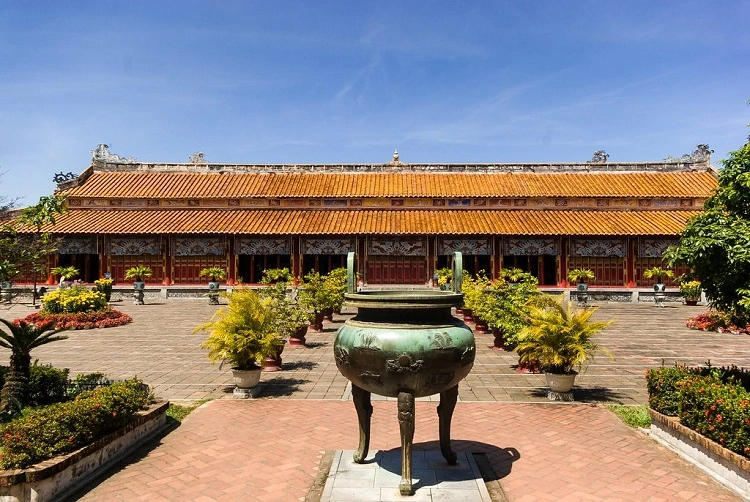
The front hall consists of 11 sections and two separate pavilions. The main hall is divided into 9 sections, and the two side pavilions are connected by intricately carved wooden panels. The temple’s roof has two tiers, covered with golden-colored glazed tiles and adorned with majestic dragon sculptures. In front of the temple, there is a row of 14 stone pedestals supporting 14 large porcelain vases on the upper side of the staircase for planting beautiful plants. A pair of bronze kylin statues are placed on stands on either side of the courtyard. At the end of the courtyard, there are nine giant bronze urns (Cửu Đỉnh), corresponding to the nine worship sections of the temple.
The Mieu (Temple of Generations) is the most significant ancestral worship temple within the Hue Imperial City. In addition to the main temple area, there are several associated structures with artistic and historical value, such as the Cuu Dinh, Ta, Huu Tung Tu (dedicated to the worship of deities), Canh Bieu Dien (dedicated to Confucius, now destroyed), Hien Lam Cac (honoring the virtues of deities, kings, and officials of the Nguyen Dynasty), and the Earth God Temple.
The Mieu – Where is it? Directions to The Mieu?
The Mieu is located within the Hue Imperial City to the southwest. It serves as the focal point for royal ceremonies honoring deceased emperors. To reach this location, visitors first need to arrive at the Hue Imperial City and pass through the Ngọ Môn Gate. Afterward, turn left and walk approximately 3 km, then make a right turn. Walk an additional 100 meters, and you will find The Mieu.
Additionally, if you are in Da Nang and want to quickly travel to Hue, using the private car rental service with a driver in Hue from VnCarRentals.com can facilitate your journey. With the door-to-door private car rental service, professional drivers with years of experience will ensure the fastest and most convenient trip for you. Book a private car rental service from Da Nang to Hue today for specific advice and assistance.
Ticket Prices and Opening Hours of The Mieu
Located within the premises of Hue Imperial City, visitors can take advantage of the opportunity to explore this site. Simply purchasing a ticket for the Imperial City, you can delve into various captivating locations, including The Mieu.
Opening hours: 8:00 AM – 5:00 PM Ticket prices:
- Adults: 200,000 VND/person
- Children: 40,000 VND/person
Which Kings are Worshipped at The Mieu?
According to the regulations of the Nguyen family, kings considered “abdicated” or “deposed” are not worshipped here. Therefore, in The Mieu before 1958, there were only 7 royal altars.
- Central section: Worshipping Thế Tổ Cao Hoàng Đế (Emperor Gia Long) and queens Thừa Thiên, Thuận Thiên
- Leftmost section: Worshipping Thánh Tổ Nhân Hoàng Đế (Emperor Minh Mang) and queen
- Rightmost section: Worshipping Hiến Tổ Chương Hoàng Đế (Emperor Thieu Tri) and queen
- Second leftmost section: Worshipping Dực Tông Anh Hoàng Đế (Emperor Tu Duc) and queen
- Second rightmost section: Worshipping Giản Tông Nghị Hoàng Đế (Emperor Kiến Phúc)
- Third leftmost section: Worshipping Cảnh Tông Thuần Hoàng Đế (Emperor Dong Khanh) and queen
- Third rightmost section: Worshipping Hoằng Tông Tuyên Hoàng Đế (Emperor Khai Dinh) and queen
By October 1958, the Nguyen Phuc Family Council had brought the altars of three patriotic kings, Hàm Nghi, Thành Thái, and Duy Tân, to be worshipped at The Mieu.
- Fourth leftmost section: Worshipping King Ham Nghi
- Fifth leftmost section: Worshipping King Thanh Thai
- Fourth rightmost section: Worshipping King Duy Tan
Exciting Experiences When Visiting The Mieu
Every year, visitors from around the world come to admire the magnificent scenery and ancient architectural structures within the Hue Imperial City. Simultaneously, they can set foot in The Mieu to pay respects and learn about the history of the country during the reign of the Nguyen emperors.
Explore the Unique Architecture of the Nguyen Dynasty
The structure and arrangement of altars at The Mieu follow the basic model of arranging altars for the Nguyen Dynasty emperors. At the outermost layer, altars are decorated with precious stones, often featuring intricate carvings of the four supernatural creatures, clouds, lotus leaves, and gold leaf. In the center, there are incense burners and altar tables for offerings, candles, and artifacts associated with the emperors during their lives. The intricate and artistically decorated gold-plated engravings make these artworks truly masterpieces.
Learn the Life History of the Nguyen Dynasty Emperors
The Mieu is a place of worship for the first emperors of the Nguyen Dynasty, from Emperor Gia Long to Emperor Minh Mạng. Here, visitors can learn about the backgrounds, careers, and contributions of these emperors to the nation.
Tourist Attractions near Hue Imperial City
In Hue, there are many famous and appealing tourist destinations. This area not only boasts numerous unique tombs with distinctive architecture but also features beautiful nature and abundant landscapes. If possible, consider combining your visit to The Mieu with other places like:
Hue Imperial City
Hue Imperial City is the largest complex of imperial architecture in Vietnam and is recognized as a UNESCO World Heritage Site. It is a renowned tourist destination in Vietnam, attracting millions of visitors each year. Here, tourists can admire countless unique architectural structures, such as Ngọ Môn Gate, The Mieu, and Cuu Dinh.
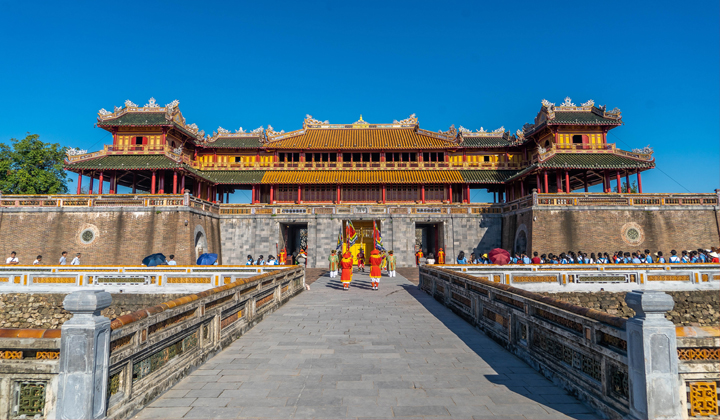
Vong Canh Hill
Vong Canh Hill is a famous tourist spot in Hue that you shouldn’t miss. This location exudes a poetic and romantic beauty, often likened to a “watercolor painting” in the heart of the city. Visitors can enjoy panoramic views of Hue from the hill, including the Perfume River and the majestic Ngự Bình Mountain. A visit to this spot promises an interesting experience with stunning photographs.
Truong Tien Bridge
Truong Tien Bridge is now one of the symbols of Hue and a famous tourist destination for both domestic and international visitors. The bridge is a familiar place for locals to come and enjoy the scenery, take long walks, or simply relax and soak in the refreshing air near the romantic Perfume River.
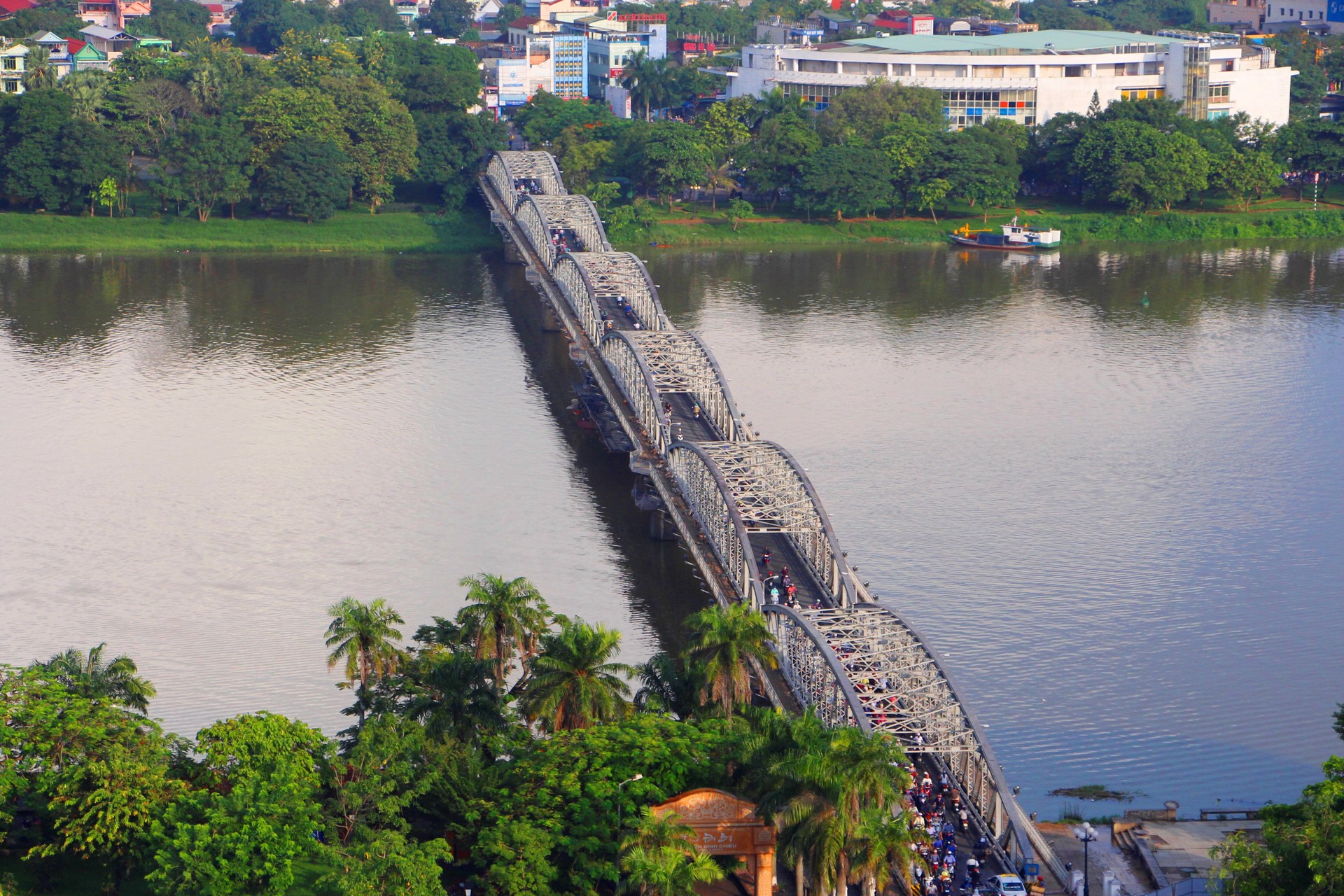
Notes for Visiting The Mieu (Temple of Generations)
When exploring historical sites within Hue Imperial City in general or The Mieu in particular, visitors should take note of certain considerations. Specifically:
- Maintain a serious and respectful attitude when visiting places of worship.
- Dress modestly and appropriately when visiting The Mieu.
- Preserve general hygiene, refrain from littering at the tourist sites.
- Prohibit defacing or touching objects at the tourist site, such as tree trunks, stone benches, etc.
- Avoid touching the artifacts at The Mieu.
The Mieu (Temple of Generations) still retains its solemn and dignified charm, inherent in its nature as a famous tourist destination. This place attracts a large number of visitors when exploring Hue Imperial City. It is not only a place of worship but also an important historical landmark in Vietnam.
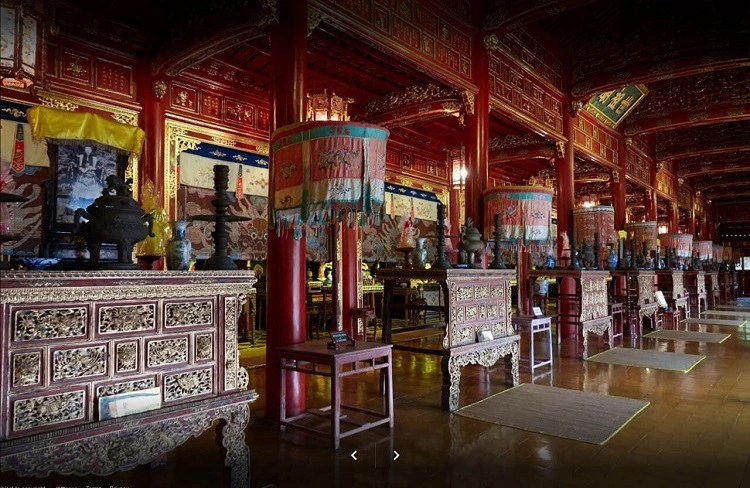
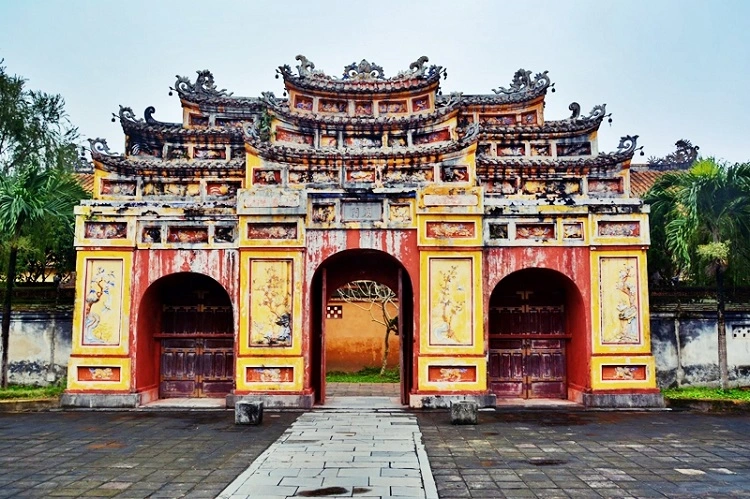


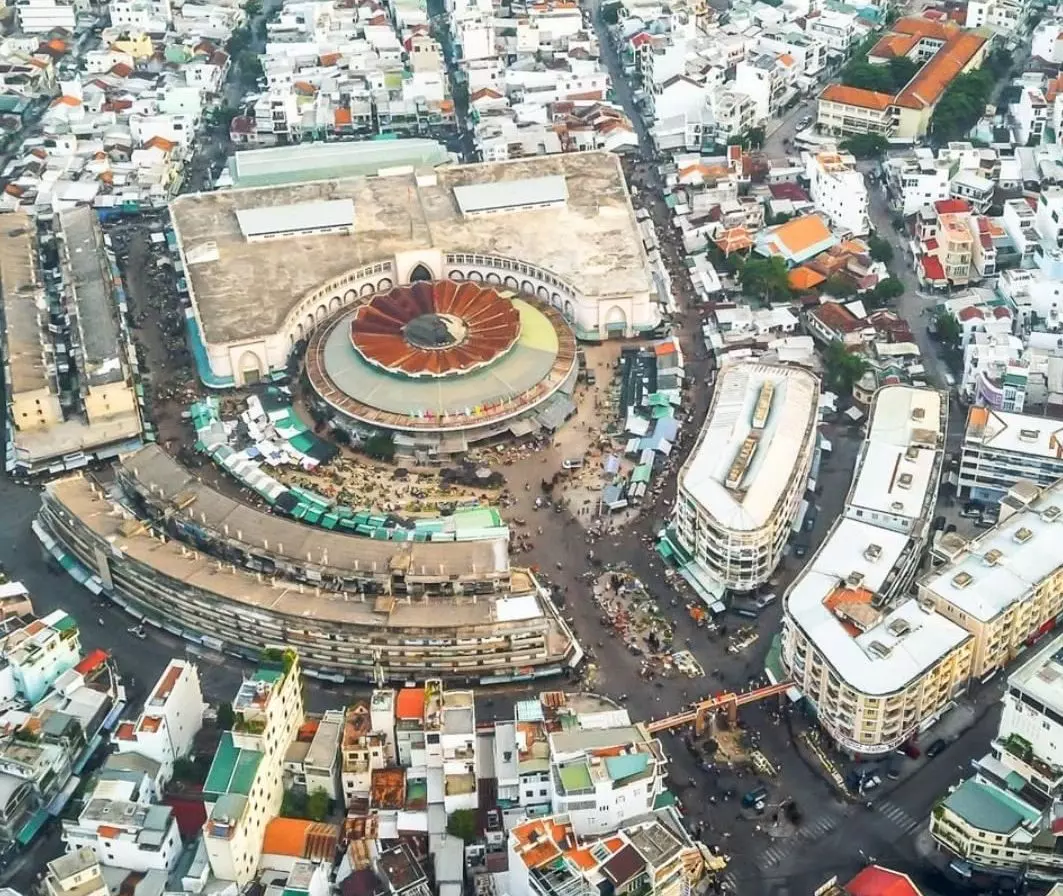
[…] Temple of the Generations is a wooden structure built in the “double turtle” architectural style. The rectangular area covers over 2 hectares, including the main house, front house, and connected single-roof structures. […]